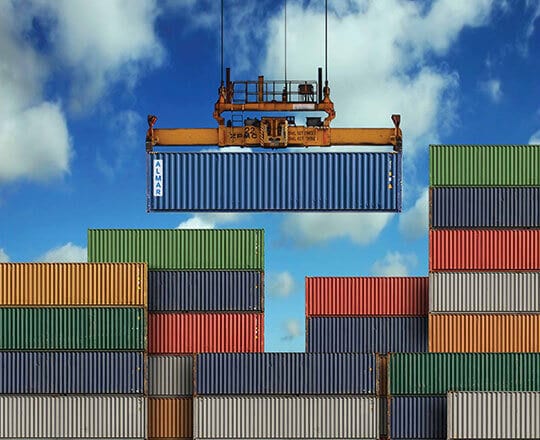Container Technology – Examples and Advantages

What are the Containers?
The term “container” may at first appear to be a very vague description of an IT solution, but it is actually a precise description of its function. A container encloses software in a complete file system that contains all the necessary components to ensure that the software always behaves the same, regardless of the environment. In principle, everything is stored in a container, protected from the outside world. This containerization of a “complete system” can be implemented for a specific application and infrastructure service or for the entire application.
Application Example of Containerization
You want to create an application to support online transactions. Users log in, click on the desired items and go through the usual ordering process before the transaction is executed.
Containers can be used in such an application to ensure that the entire application does not come to a standstill if individual sections fail. By isolating each service as “microservices” in different containers, the application as a whole is prevented from being interrupted. Instead, if a container or system failure occurs, the service will simply fall back to alternative systems and execute the job there.
With traditional technologies, this would be implemented as a multi-tier application where the failure of one layer would result in the application being affected or a total failure.
Since all sections are separated into separate packages, a container is safer and more reliable. This approach ensures that each container is responsible for its own unique task. Rather than the concept of an all-rounder that does not do a task particularly well, containers ensure that each task is performed by a separate specialist.
Advantages of Container Technology
In the example mentioned above, it was more of a business solution. Now the question arises of how a public authority can benefit from the function of containers. On closer inspection, the properties of containers are excellent for the public sector.
For one thing, containers are very slim; they concentrate on a single task and use very few resources. Combined with the fact that containers are based on open source technology, this means that they can be run anywhere, regardless of the environment, providing a low-maintenance, cost-effective, and easy-to-deploy solution for government IT professionals.
In addition, containers are more secure due to their individuality. Because containers are isolated from other tasks and processes, they are protected from the outside world and are therefore safer than solutions without containers.
In fact, most of the benefits of containers stem from their small size and standalone capability. As a result, they are highly scalable and use a minimal amount of memory or disk resources, and their flexibility allows them to scale across distributed vendors.






